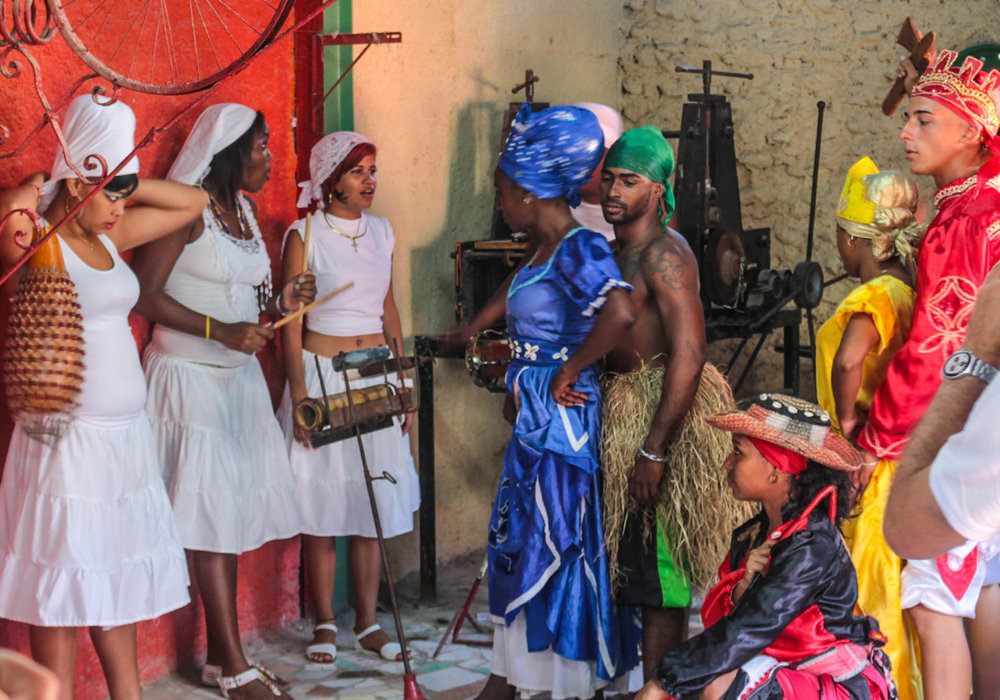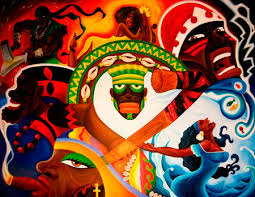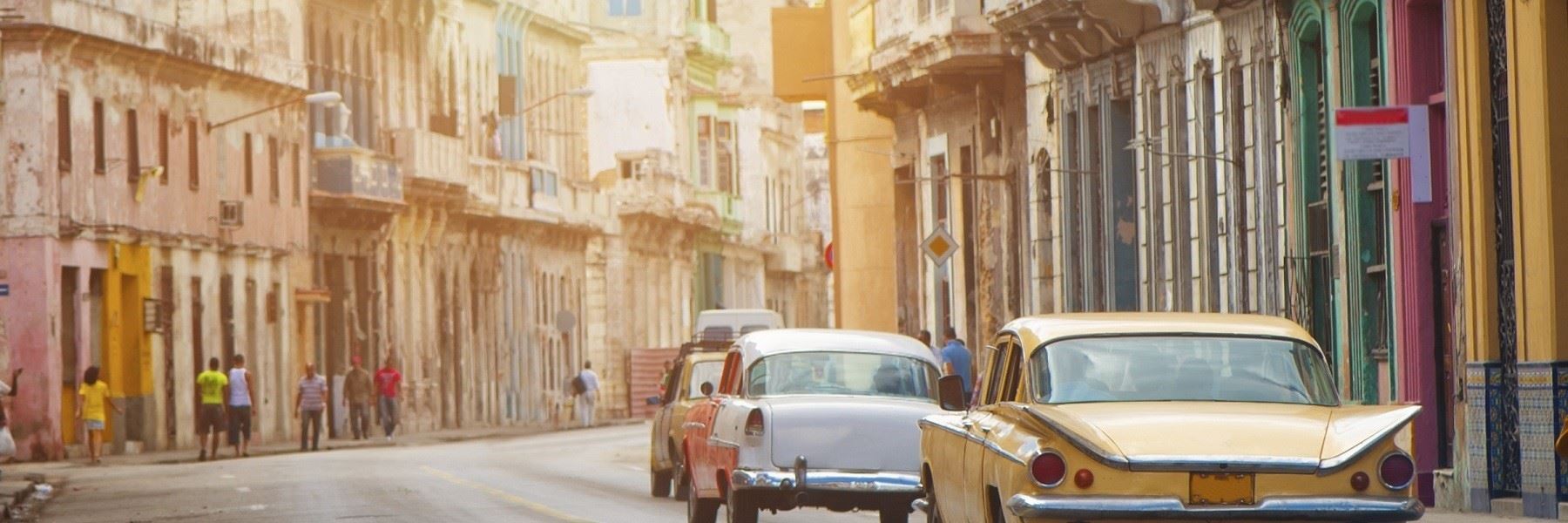 EXPRESIONES DE LA CULTURA YORUBA EN EL AMBIENTE NACIONAL.
EXPRESIONES DE LA CULTURA YORUBA EN EL AMBIENTE NACIONAL.
Los elementos culturales más extendidos y persistentes en Cuba han sido los Yoruba, debido al gran desarrollo alcanzado por este pueblo antes de la colonización y de la manera en que estos se insertaron en el ambiente cubano.
Estos eran los que gozaban de mayor preferencia para las labores domésticas o industriales. Fue en la región occidental donde mayor presencia tuvieron estos grupos, a los que también se les conoció como Lucumí.
Expresión de canto, baile y percusión, originaria de la región de asentamiento de los pueblos yorubas, traídos del África durante la trata colonialista, en los siglos XVI, XVII, XVIII y XIX. Estos grupos se radicaron, como mano de obra, en toda la Isla, principalmente en las provincias de La Habana, Matanzas y Las Villas.
«Sus instrumentos musicales son los tambores batá; los abwes, Ilamados también chekeres o guiros, y los tambores de bembé. A este complejo pertenecen los tambores iyesa y hay que añadir una extensa variedad de sonajas, agogos (campanillas ) y atcheres (endo-percutientes del tipo maraca), y gran variedad de pitos, zumbadores y percutidotes. El cantante solista es el akpwon al que responde el coro.»
Sus cantos se entonan en lengua lucumí, aunque, con el tiempo, han asimilado palabras castellanas.
LA LENGUA YORUBA.
La lengua yoruba fue una de las primeras lenguas africanas en ser codificada en una gramática y diccionario, hacia mediados del siglo XIX por Samuel Crowther, un yoruba vendido como esclavo en 1821 y manumitido por los británicos y bautizado y ordenado como misionero para servir en el país yoruba.
En 1900 se produce una traducción completa de la Biblia, iniciada y llevada a cabo, en parte, por Crowther. La escritura en verso y prosa data de la década de los veinte del siglo anterior y entre 1845-60 se producen las cuatro populares novelas de Daniel Fagunwa.
DATOS
La lengua yoruba pertenece al grupo kwa de las lenguas congo-kordofán, siendo hablada por unos 20 millones de personas en Nigeria y en Benin y Togo, lo que la constituye en la lengua niger-congo más hablada, superando incluso a la swahili pues hay que tener en cuenta que ésta última es hablada por unos 35 millones de personas pero la mayor parte la usan como segunda lengua.
DIALECTOS
El yoruba normativo es una mezcla de dos dialectos estrechamente emparentados, el de Oyo y el de Lagos, existiendo muchas variantes dialectales.
ESCRITURA
Para escribir en yoruba se usa el alfabeto romano con diacríticos.
GRAMATICA
Existen tres tonos: alto, medio y bajo. El orden de la frase es sujeto, verbo y objeto.
 EXPRESSIONS OF THE YORUBA CULTURE IN THE CUBAN ENVIRONMENT.
EXPRESSIONS OF THE YORUBA CULTURE IN THE CUBAN ENVIRONMENT.
The most widespread and persistent cultural elements in Cuba have been the Yoruba, due to the great development achieved by this people before colonization and the way in which they were inserted into the Cuban environment.
These were the ones who enjoyed a greater preference for domestic or industrial work. It was in the western region where these groups had the greatest presence, who was also known as Lucumí.
Expression of song, dance, and percussion, originating from the region of the settlement of the Yoruba peoples, brought from Africa during the colonialist trade, in the sixteenth, seventeenth, eighteenth and nineteenth centuries. These groups settled, as labor, throughout the Island, mainly in the provinces of Havana, Matanzas, and Las Villas.
«Its musical instruments are the batá drums; the abwes, also called chekeres or guiros, and the drums of bembé. Iyesa drums belong to this complex and we must add a wide variety of rattles, agogos (bells) and atcheres (maraca type endo-percussors), and a great variety of whistles, buzzers, and percutidotes. The lead singer is the akpwon to which the choir responds. ”
Their songs are sung in the Lucumí language, although, over time, they have assimilated Spanish words.
THE LANGUAGE OF YORUBA.
The Yoruba language was one of the first African languages to be encoded in grammar and dictionary, around the middle of the 19th century by Samuel Crowther, a Yoruba sold as a slave in 1821 and manumitted by the British and baptized and ordained as a missionary to serve in the Yoruba country.
A complete translation of the Bible is produced in 1900, initiated and carried out, in part, by Crowther. The writing in verse and prose dates from the twenties of the previous century and between 1845-60 the four popular novels by Daniel Fagunwa were produced.
DATA
The Yoruba language belongs to the Kwa group of the Congo-Kordofan languages, being spoken by about 20 million people in Nigeria and Benin and Togo, which makes it the most widely spoken Niger-Congo language, even surpassing Swahili as there are We must bear in mind that the latter is spoken by some 35 million people, but most of them use it as a second language.
DIALECTS
Normative Yoruba is a mixture of two closely related dialects, that of Oyo and that of Lagos, with many dialect variants.
WRITING
To write in Yoruba, the Roman alphabet is used with diacritics.
GRAMMAR
There are three shades: high, medium and low. The order of the sentence is subject, verb, and object.
Agencies/ Conexion Cubana/ EKWE/ Santeria/ Internet Photos/ Arnoldo Varona/ www.TheCubanHistory.com
THE CUBAN HISTORY, HOLLYWOOD.











